Today Dev Anand’s centenary celebrations have been kicked off across India. Fans across India, including me, are going wild. The festivities include screening four restored films: CID, Jewel Thief, Guide, and Johny Mera Naam. These four films span 20 years of cinematic life, creating generations of fans. Always considered a style icon, it is perhaps time to reconsider his “acting” skills over the prominent Star image. Maybe I am reinventing the wheel a bit, but there are enough films that show that Dev Anand, the actor, took risks which his contemporaries didn’t.
Before that, a personal journey of how my Dev Anand fandom began.

I must have been six or seven years old when my “Mama“, a die-hard Dev Anand and Mohammed Rafi fan, took me to see Guide at Alankar cinema (He is 82 now and still a die-hard fan of both). I remember that the lobby cards were of Jewel Thief. So, this must have been around the time Jewel Thief was released (or about to be released) in 1967. What stayed in my mind were the superbly crafted songs, and since then, I have been a (die-hard?) S.D.Burman fan.
Jump to 1972. TV had finally arrived in Bombay. Chaya Geet was a rage with everyone. Between 8:15 and 8:45 p.m. on Thursday, the streets would be deserted with old and young alike glued to black and white TV sets. On Friday, at school, we would avidly discuss the songs with the most favouring “new” songs as compared to “old” ones. Communal/ Common TV viewing was the rule. I saw TV mainly in the neighbourhood homes or with family friends, but mostly in my landlord’s home. One Thursday, the first song was Dekh humey aawaz na dena” from Amardeep (1958). The landlord’s son got up from his seat and loudly exclaimed, “Dev Saab. Forever”. I couldn’t understand why, but now I know that my moment was coming some years later.
Between July and October 1977, Kohinoor Cinema in Dadar West ran Dev Anand films at reduced rates. At Rs 1.50 every Saturday, I checked into Kohinoor and watched all the 1950s and some 1960s movies. It was a rerun of all his classic films of the 1950s and some from the 1960s. Baazi.Funtoosh. Taxi Driver. Paying Guest. Nau Do Gyarah – perhaps India’s first “road movie”. Kala Paani. Kaala Bazaar. Tere Ghar ke Samne. Teen Deviyan. Guide.Johny Mera Naam. Hare Ram Hare Krishna. My fandom moment had arrived.
These movies gave me an insight into how Dev Anand, the Star, managed at times to sneak in themes and characters that were not strictly black or white but had shades of grey. Unlike his contemporaries, his grey characters were in quite a few films, usually, but not limited to, his home production Navketan.
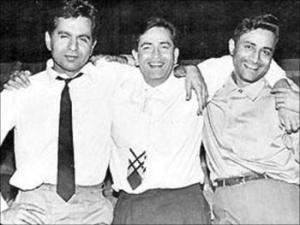 “The Big Three” of the 1950s were indeed a symbol of what newly independent India was. If DilipKumar was a “Tragedy King” (people forget that he did the fluffy Azaad), and Raj Kapoor was the common man “Raju”, Dev Anand was the urbane new Indian who looked at new opportunities in the new India. It would be a rare sight in the 1950s to see Dev Anand wearing a dhoti kurta (he did that in the 1940s in some early films). He was the suave city-bred guy in jackets and suits. The Big Three understood their social responsibilities, too. While Raj Kapoor was the Nehruvian hero, the commoner who triumphed over all adversities, Dev Anand became the most unlikely Nehruvian hero with Maya(1961) and Asli Naqli(1962) where he left his rich home and preferred to stay with the poor, but finally bridging the gap between Rich and Poor. Dev Anand even acted in “Ek ke baad ek (1960)” , a film on family planning, which exactly didn’t hit the box office. It was a risk, but there had already been many such risks in the 1950s.
“The Big Three” of the 1950s were indeed a symbol of what newly independent India was. If DilipKumar was a “Tragedy King” (people forget that he did the fluffy Azaad), and Raj Kapoor was the common man “Raju”, Dev Anand was the urbane new Indian who looked at new opportunities in the new India. It would be a rare sight in the 1950s to see Dev Anand wearing a dhoti kurta (he did that in the 1940s in some early films). He was the suave city-bred guy in jackets and suits. The Big Three understood their social responsibilities, too. While Raj Kapoor was the Nehruvian hero, the commoner who triumphed over all adversities, Dev Anand became the most unlikely Nehruvian hero with Maya(1961) and Asli Naqli(1962) where he left his rich home and preferred to stay with the poor, but finally bridging the gap between Rich and Poor. Dev Anand even acted in “Ek ke baad ek (1960)” , a film on family planning, which exactly didn’t hit the box office. It was a risk, but there had already been many such risks in the 1950s.
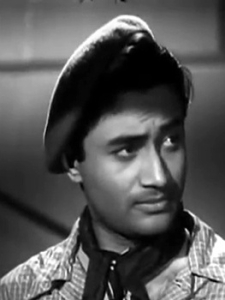 His “classic” period starts with Baazi (1951), considered one of the earliest contemporary crime thrillers. Madan (Dev Anand) moves from small-time street gambling to big-time organized gambling in an underground gambling den. There is a reason – he has to earn enough money to treat his sick sister. From baggy pants, scarf, cigarette dangling on his lips, and beret to sharp suits and cigars is a quick jump. So, too, is the lifestyle where he can afford anything. In one of the finest scenes, he puts his feet on a table, puffs a cigar and smirks, “When the clothes are good, respect flows.” His doctor friend Rajni (Kalpana Kartik) asks him, “Where did you get the money? You have done something wrong and got it”. He smirks again. “You wanted me to always be in poor clothes and surroundings so that a rich woman like you can take pity on me?”. It was an excellent scene of what the character was going through.
His “classic” period starts with Baazi (1951), considered one of the earliest contemporary crime thrillers. Madan (Dev Anand) moves from small-time street gambling to big-time organized gambling in an underground gambling den. There is a reason – he has to earn enough money to treat his sick sister. From baggy pants, scarf, cigarette dangling on his lips, and beret to sharp suits and cigars is a quick jump. So, too, is the lifestyle where he can afford anything. In one of the finest scenes, he puts his feet on a table, puffs a cigar and smirks, “When the clothes are good, respect flows.” His doctor friend Rajni (Kalpana Kartik) asks him, “Where did you get the money? You have done something wrong and got it”. He smirks again. “You wanted me to always be in poor clothes and surroundings so that a rich woman like you can take pity on me?”. It was an excellent scene of what the character was going through.
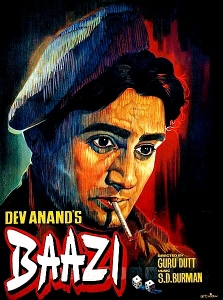 Baazi has some more scenes where Madan’s dilemma comes through as he is caught between a rock and a hard place with pressures all around him. Actor Balraj Sahni’s story and Guru Dutt’s direction help us to identify with the character. We can also consider it one of the earliest examples of the standard trope of “crime doesn’t pay”. If the hero is the criminal, he will repent (Madan goes to jail in the final act and redeems himself). The “star” didn’t have to worry about the actor. So much so that the only onscreen song ‘Tere teeron me chupey pyar ke khazaney hain“, is partly sung with Dev Anand sitting on a donkey (impossible even to imagine this in later years)
Baazi has some more scenes where Madan’s dilemma comes through as he is caught between a rock and a hard place with pressures all around him. Actor Balraj Sahni’s story and Guru Dutt’s direction help us to identify with the character. We can also consider it one of the earliest examples of the standard trope of “crime doesn’t pay”. If the hero is the criminal, he will repent (Madan goes to jail in the final act and redeems himself). The “star” didn’t have to worry about the actor. So much so that the only onscreen song ‘Tere teeron me chupey pyar ke khazaney hain“, is partly sung with Dev Anand sitting on a donkey (impossible even to imagine this in later years)
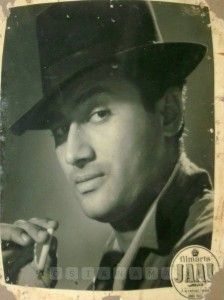
Jaal(1952) has yet another grey, even despicable, character. Tony isn’t above entangling an innocent fisherwoman, Maria (Geeta Bali), in his smuggling activities. He leers at her, plays off one smuggler against the other, uses another woman as a carrier and is generally unlikable. When Maria increasingly becomes agitated, Tony smirks, “Till yesterday, I was an angel. Today, I am the bad fish that’s polluting the pond?”. Tony isn’t concerned with anyone except his survival and using Maria’s fishing boat as a vehicle for smuggling. As said above, the character repents only in the last few minutes – in keeping with the signs of the times (and the unmentioned diktats of not glorifying crime and criminals).
Taxi Driver (1954) is as much a tribute to Bombay the city as it’s about the grind of a taxi driver who flirts with the underworld but stays true to his job. Again, there are shades of grey as he is concerned with earning money and his “love” is a bit transactional. He doesn’t recognize Sylvia’s (Sheila Ramani) love and is merely surviving. In a drunken state, he rambles about his troubles to Mala (Kalpana Kartik) and, the next day, repents. This is a nicely written and acted scene. You wonder why such stuff disappeared in later years.
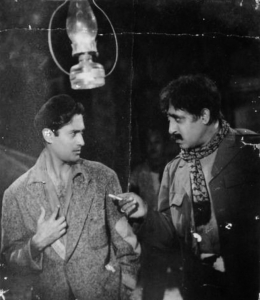
Yet another grey role is as Ashok in House No.44(1955) – again a Navketan production. As a petty criminal and a carrier, Ashok is concerned with staying alive. In an attempt to go straight, he becomes a police informer, resulting in one of the criminal’s death. The Gang boss “Captain” (K.N.Singh) is after him. There is an explanation, of course – it is an attempt to go straight. Yet the character is not exactly a “white” character as he is now caught between his lady love, the police and the increasingly suspicious criminal gang.
Baarish (1957) was a loose copy/ inspiration of On the Waterfront. Ramu is on the fringes of the criminal underworld yet somehow maintains his good nature. He is out for revenge for his best friend’s killing while being thwarted by his lady lover, who wants him to be straight.
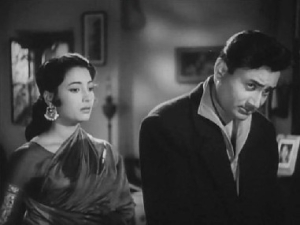
Perhaps one of the darkest characters he played was in Bambai ka Babu. Babu has killed his erstwhile partner Bali (Jagdish Raj), flees to rural India and ends up posing as the long-lost son of a family. To his chagrin, he is blackmailed into sending money to his blackmailers and soon is in love with his “sister” Maya. In a dream sequence, Babu tells Maya, “I don’t want a sister’s love. I want a woman’s love”. Yes, it’s a dream, but it’s potent stuff for the 1960s. The dilemma of being caught between two opposing forces is best expressed in the superb Rafi song “Saathi na koi manzil diya hai na koi mehfil”.
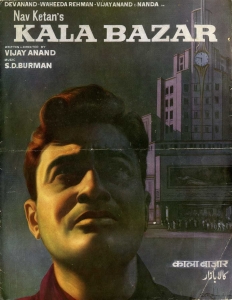
Then there is Kaala Bazaar(1961). Bus conductor turned black marketer Raghuvir stalks a woman, Alka (Waheeda Rehman), as her boyfriend Nand (Vijay Anand) is abroad. Raghuvir worms his way into her family and affections, but she rejects him, saying she is engaged. Raghuvir decides to go straight when one of his employees dies, and his mother discovers the truth. The pre-interval part with three superb Rafi solos is where “black marketer” Raghuvir does what he does best, and Dev Anand, the actor, emerges.
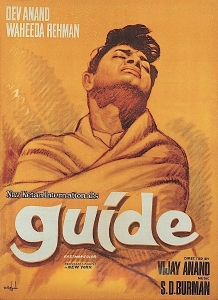
Any way one sees it, Guide (1965) was a film far ahead of its time. Did the “shades of grey” disappear with “colour”? “Raju Guide” “helps” Rosie the dancer to become famous. As Rosie’s fame builds, Raju, no longer the Guide but a suave “Manager’, is more concerned about meeting “society” standards and living the high life. At the same time, Rosie dislikes that lifestyle. Rosie had already left her abusive husband. For these two characters alone, the film is laudable. However, its writer, R.K. Narayan, wasn’t happy with how his characters became “glamorous” on screen. Looking back both the book and the film stand on their own.
Post Guide, it was Dev Anand, the suave star onscreen. The dark and grey characters disappeared altogether. Millions across India looked up to him as the ultimate sophisticated guy with, the swag they would like to have.
 For me, Jewel Thief remains the ultimate Dev Anand film. I probably saw it around 1977 or 1978 at reduced rates at (now defunct) Barkha cinema. This is one of those films where everything comes together. Dev Anand was at the top of his game. So, too, his director brother Vijay Anand, with his tight, clever screenplay, which was very worthy of any Hollywood crime caper. (Whenever I think of Jewel Thief, I am reminded of “Operation Mincemeat” during World War 2 when the British fooled the Germans with the dead body of “Major Martin, “The Man Who Never Was.). The clever deception was backed up with a stunning jazz-inspired background score credited to R.D. Burman. The title music is set to a 5/4 jazzy beat and there are some sections in the film (when Dev Anand meets Helen) where Henri Mancini’s Pink Panther’s influence can be heard. S.D.Burman composed six superb songs, each picturized brilliantly by Goldie. Rulake gaya sapna mera was one of lyricist Shailendra’s last songs while all the other songs were written by the incredibly versatile Majrooh Sultanpuri. A superb Kishore-Lata duet Aasman ke neeche. A “club song” with Helen Baithey hain kya uske paas. The second heroine Tanuja out to seduce the hero with “Raat Akeli hai“. Another superb Rafi-Lata duet set in the hills of Sikkim “Dil Pukare aare aare“
For me, Jewel Thief remains the ultimate Dev Anand film. I probably saw it around 1977 or 1978 at reduced rates at (now defunct) Barkha cinema. This is one of those films where everything comes together. Dev Anand was at the top of his game. So, too, his director brother Vijay Anand, with his tight, clever screenplay, which was very worthy of any Hollywood crime caper. (Whenever I think of Jewel Thief, I am reminded of “Operation Mincemeat” during World War 2 when the British fooled the Germans with the dead body of “Major Martin, “The Man Who Never Was.). The clever deception was backed up with a stunning jazz-inspired background score credited to R.D. Burman. The title music is set to a 5/4 jazzy beat and there are some sections in the film (when Dev Anand meets Helen) where Henri Mancini’s Pink Panther’s influence can be heard. S.D.Burman composed six superb songs, each picturized brilliantly by Goldie. Rulake gaya sapna mera was one of lyricist Shailendra’s last songs while all the other songs were written by the incredibly versatile Majrooh Sultanpuri. A superb Kishore-Lata duet Aasman ke neeche. A “club song” with Helen Baithey hain kya uske paas. The second heroine Tanuja out to seduce the hero with “Raat Akeli hai“. Another superb Rafi-Lata duet set in the hills of Sikkim “Dil Pukare aare aare“
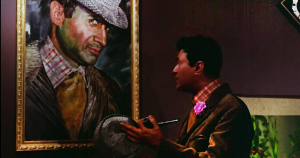 Goldie’s primary forte in song picturization was relatively long takes. The camera would not be a passive observer but would go “into the action”. This worked brilliantly in the opening Kishore song “Ye dil na hota bechara“ and in the climatic Lata-Vyjanthimala dance number “Hoton pe aisi baath“. The peerless musical baton of S.D.Burman came into its own. Six songs. Two heroines. Three Villain’s molls. Nazir Hussain, the eternal groaning father or father-in-law, as a top cop. Ashok Kumar in a completely different role than his genial self. The Sikkim locations (it was an independent country then). Goldie’s crackling screenplay. I could go on and on, but let’s stop here.
Goldie’s primary forte in song picturization was relatively long takes. The camera would not be a passive observer but would go “into the action”. This worked brilliantly in the opening Kishore song “Ye dil na hota bechara“ and in the climatic Lata-Vyjanthimala dance number “Hoton pe aisi baath“. The peerless musical baton of S.D.Burman came into its own. Six songs. Two heroines. Three Villain’s molls. Nazir Hussain, the eternal groaning father or father-in-law, as a top cop. Ashok Kumar in a completely different role than his genial self. The Sikkim locations (it was an independent country then). Goldie’s crackling screenplay. I could go on and on, but let’s stop here.
Jewel Thief is available for free on YouTube (like the above films and songs which are clickable links)
Every Dev Anand film, be it Navketan or for other producers, had superb music. Kishore Kumar emerged as Dev Anand’s “ghost voice”. Mohammed Rafi changed his singing style to a somewhat “softer” tone while singing for Dev Anand. At least three pics on the internet show that Dev Anand attended song rehearsal/ recording sessions. Undoubtedly, this resulted in some superb onscreen emoting. (Left – most likely Prem Pujari song rehearsals. Right – Joshila song rehearsal)
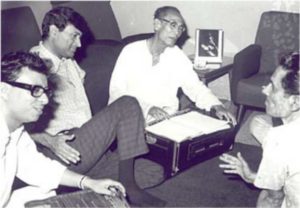
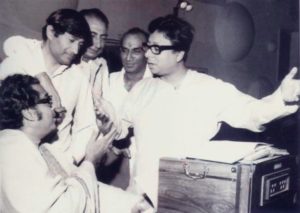
Why is he “evergreen”? Simple. He followed his credo sung by him onscreen:
Jo mil gaya usi ko muqaddar samajh liya
Jo ho gaya mai usko bhulata chala gaya
Har fikr ko dhuey me udata chala gaya
Perhaps, we can learn from that
What’s your favourite Dev Anand movie? Do share or write in the comments.
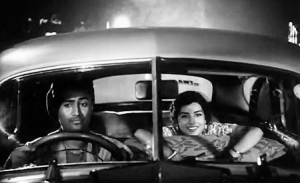
Leave a Reply
Want to join the discussion?Feel free to contribute!